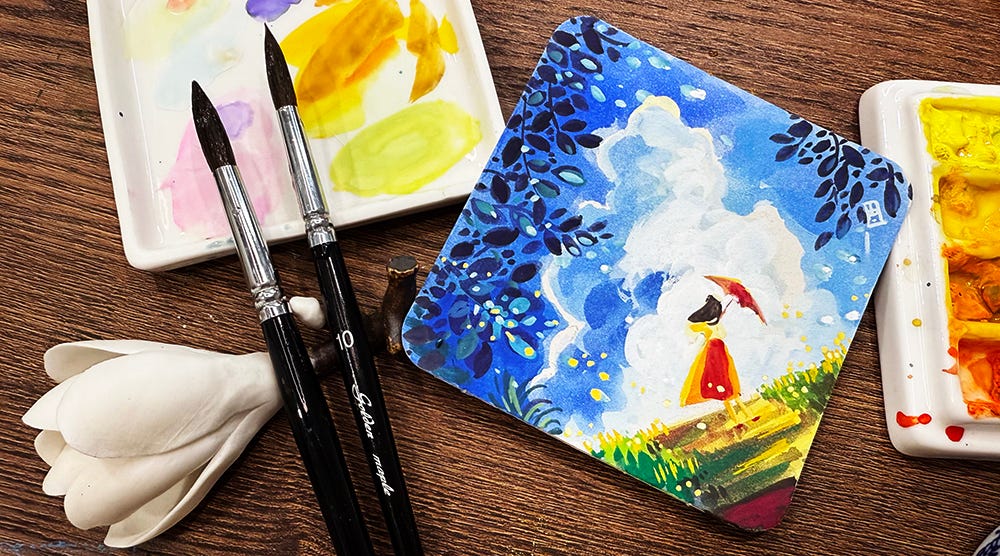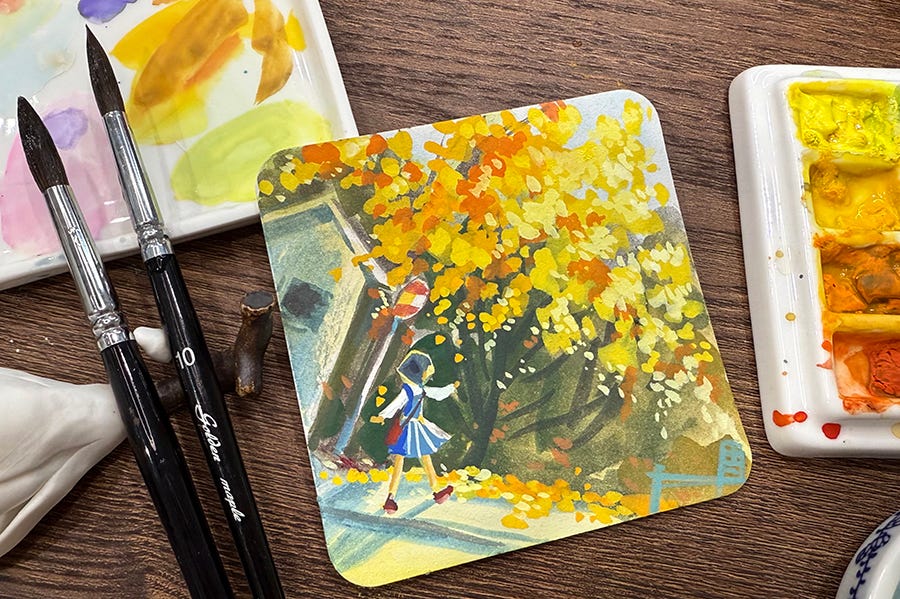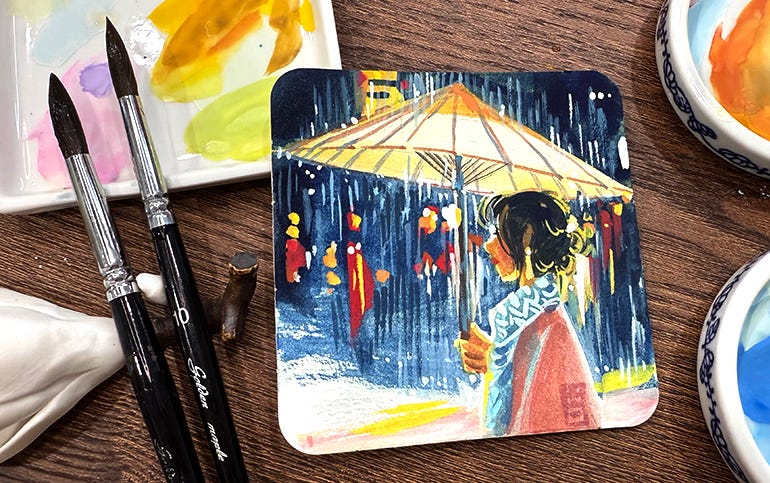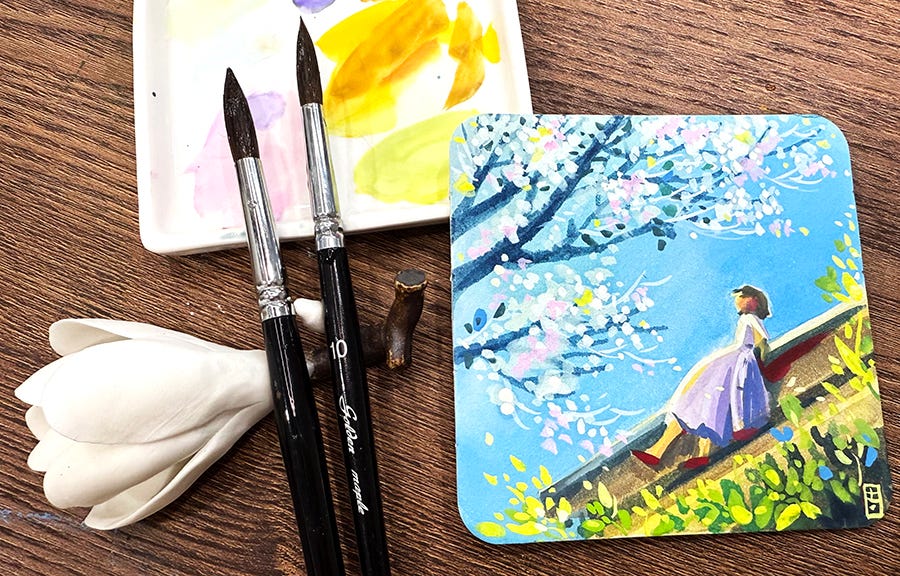Finding New Art Style Through the Masters!
Capturing Whimsy: Practicing Ghibli-Inspired Color Techniques
One of the best and most effective ways to learn artistic techniques is by studying the masters. There are plenty of ways to tackle this master study practice. Traditionally, it involves copying and analyzing a master’s work, which I did when I was first getting into drawing and painting.
In my first year at animation school, my drawing skills were pretty average because I didn’t have any formal art training and my foundation was weak. That was a real hurdle for someone looking to become a traditional hand-drawn animator. To catch up with my classmates quickly, I checked out almost every Da Vinci sketchbook and Michelangelo book from the library. I spent about 3 to 5 hours a day copying and studying their work. Once I finished with those two, I moved on to other classical masters.
In just a couple of weeks, my skills improved enough to keep up with the rest of the class. Copying and learning from the masters is one of the oldest and definitely one of the best ways to learn.
These days, I’ve switched up how I practice. Instead of just copying the works of master artists, I take the time to study and analyze their techniques through books and online resources. Then, I try out those techniques on my own without just replicating their pieces.
For this set of coaster paintings I’m putting together for the upcoming Nucleus Portland's Salut Art show, this approach really comes into play. Conceptually, these paintings might not seem super creative since they lean heavily on photo references. But my goal isn’t to create something completely original; it’s to dig into different painting techniques I've picked up from studying the masters.
The first piece above is a quick look at how Ghibli does their cloud painting and layering.
This second one dives into using contrasting colors for the base layer to really boost the saturation of the top layer.
I’m going through the process again with a few more paintings to really get a feel for the style and technique I want to use for my book projects.
Before I jump into the big projects, I’m hoping to find some time to try out a couple of different approaches. If I can fit it in, doing a traditional copy study would definitely help.
If you enjoyed this story and want to explore more like it, or if you're curious about how I'm discovering my new art style, check out my Art Tips Collection!
My Little Art Store
If you’re curious about the paints, brushes, and palettes I use, check out my Little Art Store on Amazon. I’m always updating it with great, professional-quality art supplies that won’t break the bank, all of which I personally use for my books and gallery projects. Hope you enjoy browsing the store!
🌼 Tiny Brush Magic
Golden Maple brushes have that dust-sprite sparkle ✨ (you can feel it in every stroke). As a thank you for supporting my art, enjoy 20% OFF with coupon code - Alina anytime.
No rush—the magic won’t vanish!
🖌️ Find your brush: https://artgoldenmaple.com
Happy Painting! 🥰🎨
Draw Your World SAMANTHA DION BAKER - 60: Two Art Teachers and The Place That Connects Them
The Children's Book Of Courage The Children's Book Of Courage - Prologue
Dear Somebody to your readers MEERA LEE PATEL - Dear Somebody: Birthday thoughts.
Journey with Jess Rinker JESS RINKER - Dreams










Brilliant! I love the way these came out. And congrats on being included in Salut! It's on my art goals list to be a part of that show.
Love it! Copying the masters, both old and current, is an excellent method for learning. It allows you to climb into their heads and figure things out without being troubled with asking, "How did you do this?"